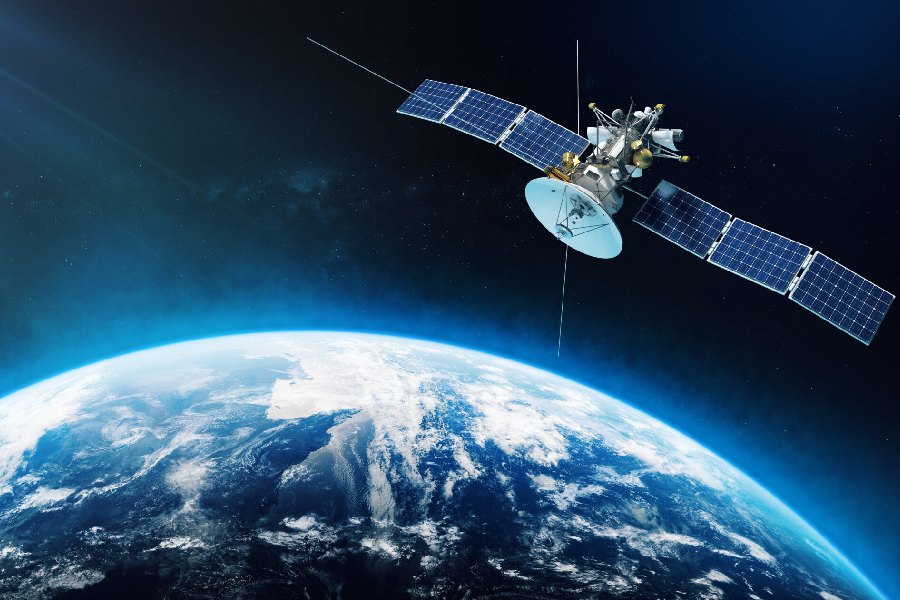In the vast expanse beyond our atmosphere, where the sky meets the cosmos, humanity has embarked on a journey of technological marvels. As we look to the stars, it’s the ingenuity of space technology allows us to explore, understand, and push the boundaries of our universe.
We’ll explore the fascinating uses of space technology, from communication satellites connecting continents to spacecraft exploring new celestial areas. From the simple yet profound to the cutting-edge wonders of engineering, we delve into the tools and gadgets that make space exploration possible.
So, fasten your seatbelts for a journey into the heart of space technology, where scientific curiosity meets the infinite possibilities of the cosmos.

Significance of Space Technology
Some of the critical technologies employed in space exploration encompass satellites, rockets, and spacecraft. Satellites, pivotal for diverse applications, enable global communication, Earth observation, and precise navigation through GPS systems.
Rockets serve as the primary propulsion system, propelling spacecraft and payloads beyond Earth’s atmosphere for exploration and satellite deployment.
Utilized for launching vehicles into specific orbits, rockets are fundamental to space missions, playing a central role in reaching and studying celestial bodies.
Spacecraft, among the most advanced technologies, serve as versatile vessels for scientific exploration, carrying instruments and humans into space.
These interconnected technologies synergize to enable humanity’s journey into the cosmos, facilitating communication, scientific discovery, and the exploration of distant celestial realms.
Benefits of Space Technology
Space technology, with its vast reach and transformative capabilities, has significantly impacted life on Earth. Beyond its celestial pursuits, the positive impacts extend into our daily lives and the realm of scientific discovery, redefining possibilities and pushing the boundaries of human achievement.
Advancements in daily life
The integration of space technology into our daily lives has become seamless, revolutionizing the way we navigate, communicate, and interact with the world.
Space technology has become an invisible part of modern life, from the ubiquitous use of GPS systems for precise navigation to the instant connectivity facilitated by communication satellites. This technology has become an indispensable part of our modern existence.
Weather forecasting is facilitated by Earth observation satellites. This ensures our preparedness for the elements, demonstrating how space technology enhances our safety, convenience, and overall quality of life.
Scientific discoveries and exploration
In the realm of scientific discovery and exploration, space technology acts as a beacon of human curiosity, enabling us to unravel the mysteries of the cosmos.
Telescopes and observatories in space provide unprecedented views of distant galaxies, stars, and planets, allowing astronomers to make groundbreaking discoveries of the cosmos.
Robotic spacecraft and rovers extend our reach to celestial bodies, conducting experiments and capturing data that reshape our understanding of the universe.
The profound impact of space technology on scientific endeavors expands our knowledge. This inspires new questions and paves the way for future exploration beyond our terrestrial boundaries.

Current Uses of Space Technology
Delving into the present, let’s uncover the diverse applications of space technology that touch numerous facets of our daily lives. From communication to environmental monitoring, space technology isn’t just about exploring the cosmos; it’s deeply intertwined with our terrestrial experiences.
Communication and global connectivity
In an era where staying connected is paramount, space technology takes center stage. Communication satellites orbiting above enable seamless global connectivity. This makes international calls, video conferences, and internet access an everyday reality.
These orbiting messengers silently ensure that our world stays in constant conversation, breaking down geographical barriers and fostering a truly interconnected global community.
Earth observation and environmental monitoring
Up above, Earth observation satellites act as vigilant guardians, providing a bird’s-eye view of our planet. These high-tech observers keep a watchful eye on environmental changes, natural disasters, and climate patterns.
By capturing comprehensive data, space technology aids in monitoring deforestation, tracking weather conditions, and responding swiftly to emergencies. In essence, these satellites serve as Earth’s silent sentinels, helping us understand and protect our delicate ecosystem.
Navigation and GPS systems
Ever wondered how your smartphone can guide you flawlessly to your destination? Enter the realm of space technology’s impact on navigation.
GPS systems, powered by satellites orbiting the Earth, bring precision to our daily journeys. Whether it’s navigating unfamiliar streets or ensuring the timely arrival of packages, space technology quietly works behind the scenes. It transforms the way we find our way in the world.
Key Technological Aspects
Satellites and remote sensing technologies
Embark on a journey into the heart of space technology by unraveling the pivotal role of satellites and remote sensing. These technological marvels silently operate in the cosmic expanse, influencing our lives in ways we might not even realize.
Communication satellites
Dive into the invisible web that spans the skies, connecting us globally through communication satellites. Explore how these orbiting messengers facilitate international conversations, broadcast entertainment, and keep the world in perpetual communication.
Earth observation satellites
Shift your gaze downward as we delve into the eyes in the sky—Earth observation satellites. These silent observers play a crucial role in monitoring our planet’s health. They track weather patterns and provide invaluable data for environmental research and disaster response.
Navigation satellites
Look to the stars, not just for inspiration but for precise navigation. Uncover the unsung heroes behind our GPS systems—the navigation satellites. Explore how these celestial guides empower our smartphones and vehicles with accuracy, reshaping the way we navigate our terrestrial domain.
Interstellar Odyssey
Embarking on an Interstellar Odyssey, we explore the extraordinary trio of the Space Shuttle, Probes, and the Space Station, each playing a pivotal role in humanity’s quest to unravel the mysteries of the cosmos.
The Space Shuttle: A technological marvel that defined an era, the Space Shuttle was the workhorse of space exploration. With its reusable design, it enabled a multitude of missions, from deploying satellites to assembling the International Space Station (ISS), fostering a new era of human spaceflight.
Probes: The unsung heroes of space exploration, Probes traverse vast cosmic distances, unveiling the secrets of distant worlds. From the Voyager missions that ventured beyond our solar system to the Mars rovers exploring the Red Planet, probes have been our silent guides, expanding the frontiers of knowledge and pushing the boundaries of human exploration.
Space Station: Orbiting high above Earth, the International Space Station (ISS) exemplifies the spirit of international collaboration. A microgravity laboratory, it serves as a hub for scientific experimentation and a testament to what can be achieved when nations unite for a common purpose. The ISS stands as a symbol of our shared commitment to understanding the complexities of living and working in space, laying the groundwork for future interstellar endeavors.
Conclusion
In conclusion, the realm of space technology stands as a testament to human ingenuity and our relentless pursuit of understanding the cosmos. The advancements achieved in space technology have not only expanded our scientific knowledge but have also catalyzed innovation across various industries, leading to the development of new technologies and solutions that benefit life on Earth.
As we continue to explore and push the boundaries of space, it is essential to recognize the transformative impact that space technology has on our society, economy, and the future of humanity.
